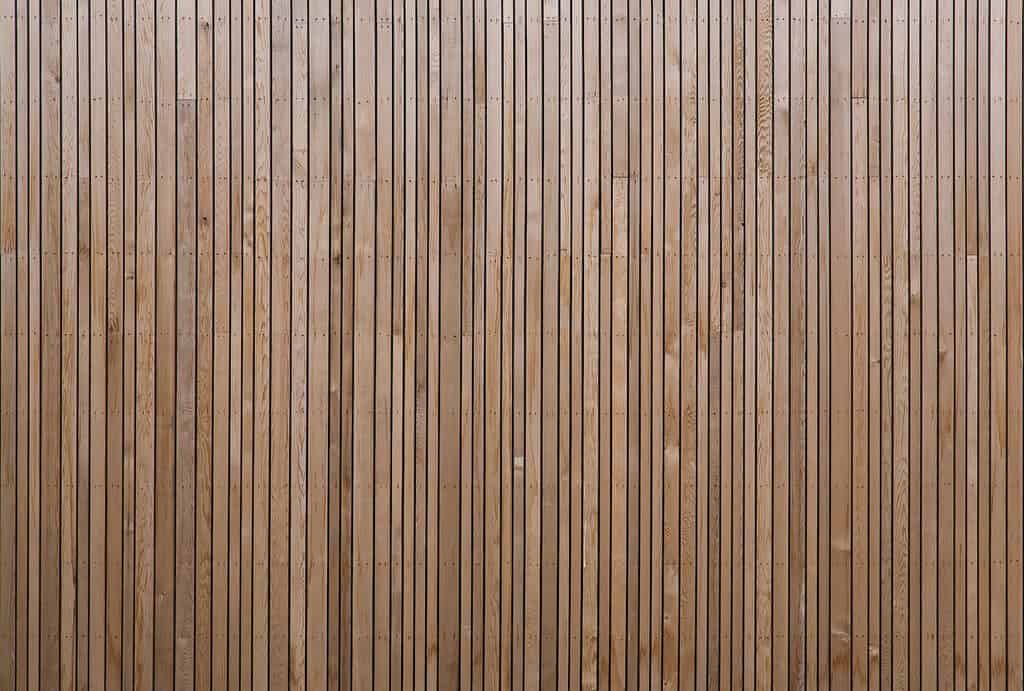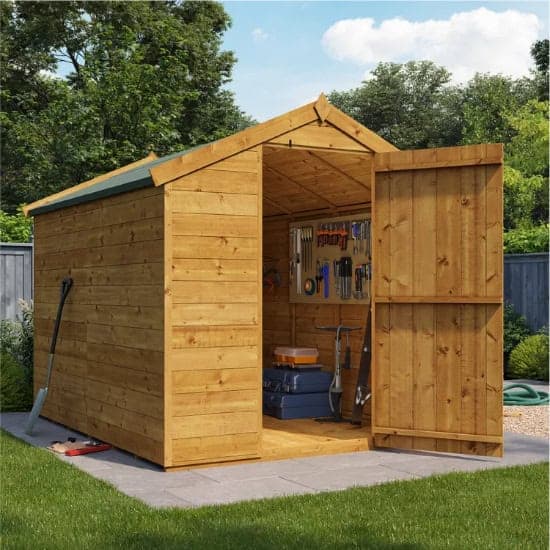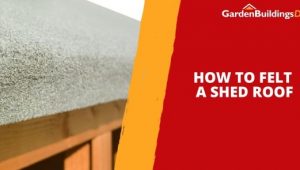Jump to:
Shed cladding usually runs either vertically or horizontally—but what’s the difference, and does it matter for wooden sheds? In this guide, we’ll look at how each option changes the look, handles rain, and adds strength.
Still choosing your next shed? Make an informed decision with our shed buying guide.
Wooden Shed Cladding Basics
Cladding covers the exterior walls of a shed to provide extra weather protection. Timber is a popular choice for this due to its versatility, especially for wooden sheds.
In addition to its outdoor durability, timber also offers insulation properties. When it comes to aesthetics, wood brings a rustic charm, and the way the cladding is placed can change the look a bit.
If you take a closer look, you’ll notice the cladding or boards are either in a vertical or horizontal layout. If they run up and down (top to bottom), they’re vertical; left to right (side to side), they’re horizontal. That’s the simplest way to tell the difference, but there’s more to it than that.
Vertical Shed Cladding

Vertical cladding gives the shed a taller, more upright appearance. This can be a perk in spaces with low ceilings or when aiming for a sleek design. It also has a more minimalist vibe, especially in modern garden sheds.
And as mentioned, the boards run from top to bottom, which directs rainwater straight down. With this design, water runs off easily, preventing moisture build-up behind the cladding. It’s suitable if you live in a region with heavy rainfall.
Vertical cladding offers greater vertical strength, allowing it to hold more weight from the top of the building. This greater weight bearing ability lets you hang more weight from the ceiling. However it may not be as sturdy against strong wind coming horizontally across.
Horizontal Shed Cladding
Horizontal cladding is the traditional choice for many sheds. It’s often seen in overlap or shiplap styles, which have been used for centuries in wooden buildings.
The boards run left to right, giving the shed a wider, more grounded look. When it comes to water runoff, they rely on the overlap of the boards to shed rain. This means water runs off the surface rather than seeping between the gaps.
Horizontal cladding also offers good lateral strength, which is useful for larger sheds. The boards run across the width and help keep the structure stable.

Take our BillyOh Storer Tongue and Groove Apex Shed, for instance. It’s a classic take on the garden storage, with a tall apex roof and tongue and groove cladding.
T&G is a common type of wooden shed cladding. Each board has a tongue on one side and a groove on the other, linking edge to edge. The end result gives the shed a strong, weather-resistant, and polished look.
Learn more about other shed cladding types here: What Cladding Is Best for a Wooden Shed?
Round-up
Choosing between vertical and horizontal shed cladding mainly comes down to 1.) what you need your shed to do, and 2.) how you want it to look.
Vertical cladding is the way to go if you get a fair bit of rain or want a more modern look. Go for horizontal if you’re after that classic style or need something sturdier across the width. Both layouts do the job, but one might suit your space or purpose better than the other.
Up next on your reading list: Shed Interior Wall Ideas for Improved Cladding





